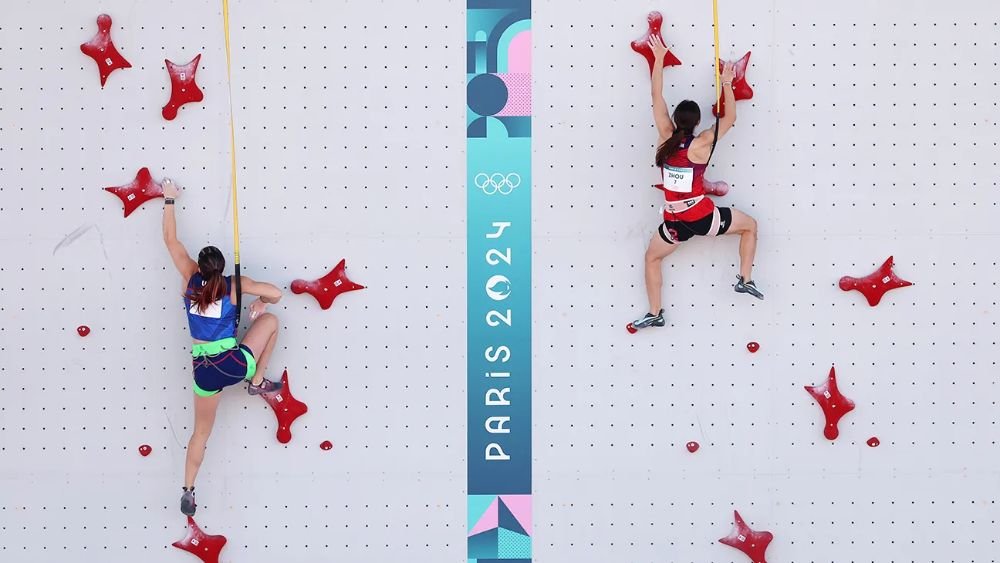Sport climbing has evolved from a niche activity to a global competition, drawing attention from athletes and fans worldwide. The inclusion of sport climbing combined Olympics has introduced a unique challenge, blending three different climbing disciplines into one competition. This format has not only tested athletes in new ways but has also played a significant role in shaping the sport’s future at the Olympic level.
Understanding how this format works and the impact it has had on the sport is essential for appreciating its growth. From changes in training methods to increased global recognition, sport climbing combined Olympics has influenced both athletes and audiences. This article explores how the combined format is shaping the sport’s future, examining its structure, benefits, challenges, and future prospects.
Understanding the Sport Climbing Combined Format
Breaking Down the Three Disciplines
The sport climbing combined Olympics format consists of three distinct disciplines: speed climbing, bouldering, and lead climbing. Each requires a different set of skills, making the competition a true test of versatility.
- Speed Climbing: Two climbers race side by side on an identical route, aiming for the fastest time. This discipline demands explosive power and quick reflexes.
- Bouldering: Athletes solve short but challenging climbing problems on low-height walls without ropes. This requires problem-solving, flexibility, and raw strength.
- Lead Climbing: Climbers attempt to ascend as high as possible on a tall wall within a time limit, testing endurance, technique, and strategy.
How Scores are Calculated in the Combined Format
Scoring in the sport climbing combined Olympics format is based on a multiplication system, where an athlete’s final score is the product of their rankings in each discipline. Lower scores indicate better performance. This system challenges climbers to maintain consistency across all three formats rather than excelling in just one.
Changes in the Format for Different Olympic Games
The Tokyo 2020 Olympics featured a single sport climbing combined Olympics event, but the format has evolved. For Paris 2024, speed climbing has been separated into its own event, while bouldering and lead climbing remain combined. This change is expected to create a more balanced competition and open opportunities for specialized athletes.
The Impact on Athletes and Training Methods
How Climbers Adapt to Multiple Disciplines
The sport climbing combined Olympics format has forced climbers to develop well-rounded skills. Unlike traditional competitions where athletes specialize, Olympians must excel in all three disciplines, leading to more comprehensive training programs.
Balancing Speed, Strength, and Technique
Training for the sport climbing combined Olympics requires balancing power, agility, endurance, and technique. Athletes must dedicate time to different climbing styles, ensuring they perform well in each category without overemphasizing one at the expense of others.
Specialized vs. All-Round Climbers: Who Has the Advantage?
Some climbers excel in specific disciplines, such as Adam Ondra in lead climbing or Janja Garnbret in bouldering. However, the combined format rewards those who can maintain a strong ranking across all events. This has encouraged climbers to expand their skill sets and train more holistically.
Physical and Mental Challenges of the Combined Format
Competing in multiple disciplines within the same event is physically demanding. It requires peak physical conditioning and mental resilience to transition between different climbing styles under high-pressure conditions.
Evolution of Sport Climbing Since Its Olympic Debut
How the Sport Has Grown Since Entering the Olympics
Since its Olympic debut, sport climbing has seen a surge in participation and interest. More national federations are investing in climbing programs, and the sport has gained recognition as a mainstream competitive event.
More Athletes, More Competition: The Changing Landscape
With increased global interest, more climbers are training for Olympic-level competition. This has intensified the competition, making the sport climbing combined Olympics even more thrilling.
New Training Techniques Inspired by the Olympics
Olympic training programs have introduced advanced strength and conditioning techniques, data analysis, and sports science applications. These advancements are helping athletes push the boundaries of what’s possible in climbing.
What Coaches Say About the Format
Coaches acknowledge the challenge of preparing athletes for three different disciplines but believe it makes climbers more complete athletes. Many support the recent format change that separates speed climbing, as it allows better specialization.
Fan Engagement and Global Popularity
How the Olympics Increased Climbing’s Global Appeal
The inclusion of sport climbing in the Olympics has introduced the sport to millions of new viewers. Countries with little prior climbing culture have started developing their own climbing programs.
New Audiences and Growing Interest in Indoor Climbing Gyms
The popularity of the sport climbing combined Olympics has led to a boom in indoor climbing gym memberships worldwide. Many people are inspired to try the sport after watching the high-intensity Olympic competition.
Television and Streaming: How Sport Climbing is Presented to Viewers
Olympic broadcasts have helped refine how climbing is presented, using slow-motion replays, expert commentary, and real-time analytics to enhance viewer understanding.
Social Media’s Role in Promoting Climbing Stars
Social media platforms have played a crucial role in promoting Olympic climbers. Athletes like Janja Garnbret and Alberto Ginés López have gained international followings, bringing more attention to the sport.
Challenges and Criticism of the Combined Format
Why Some Climbers Disagree With the Scoring System
Some critics argue that multiplying rankings can unfairly skew results. A single low placement can dramatically impact an athlete’s final score, leading to unpredictable outcomes.
Should Speed Climbing Be a Separate Event?
Many climbers believe speed climbing requires entirely different skills compared to bouldering and lead climbing. This has led to the decision to separate speed climbing in Paris 2024.
The Difficulty of Training for Three Disciplines
Preparing for all three climbing styles places immense physical strain on athletes, making it harder for them to specialize and reach their full potential in a single discipline.
Comparisons to Other Olympic Sports with Multiple Disciplines
Other Olympic sports, such as decathlon, also require versatility. However, climbing’s combination of speed, strength, and endurance makes it unique among multi-discipline events.
Innovations and Future Possibilities
Changes Expected in Future Olympic Games
As climbing evolves, future Olympic formats may continue to adapt. There is ongoing discussion about further refining the competition structure to better balance fairness and excitement.
Could New Climbing Disciplines Be Added?
Possible future Olympic climbing events could include variations like deep-water soloing or traditional climbing, adding even more diversity to the competition.
Technological Advancements in Climbing Walls and Holds
Advancements in climbing wall design, hold technology, and scoring systems continue to improve the sport’s competitive environment and accessibility.
How Youth Climbing Competitions Are Adapting
Youth climbing competitions are now structured to prepare athletes for the Olympic format, ensuring the next generation is ready for the challenge of sport climbing combined Olympics.
The Future of Sport Climbing in the Olympics
Will Sport Climbing Stay in the Olympics?
Given its rising popularity, sport climbing is likely to remain an Olympic sport, potentially expanding with additional events and more athlete participation.
Potential Adjustments to Make the Format More Competitive
Organizers may continue refining the format to ensure it remains fair, engaging, and reflective of climbing’s diverse skill sets.
What Climbers and Fans Hope to See Next
Fans and athletes hope for continued growth, more refined competition structures, and greater global participation in sport climbing combined Olympics.
Conclusion
The sport climbing combined Olympics has transformed competitive climbing, pushing athletes to new levels and attracting worldwide attention. As the sport continues to evolve, its Olympic presence will play a key role in shaping its future, ensuring that climbing remains an exciting and dynamic part of the Games.

